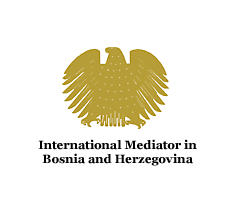TRIP REPORT 2002-3 - 7-13 JULY 2002
IntroductionIn July 2002, the Mediator visited Croatia and Bosnia and Herzegovina following international meetings in Geneva on refugee issues and the Stability Pact Area II document. The main messages of those meetings were that the time has come to move away from humanitarian dependency in South Eastern Europe and that refugee issues need to be resolved so that countries could begin to deal with other important issues. In this general framework, Croatia was mentioned on several occasions both positively and negatively. On the one hand Croatia has been working on normalising its internal political and economic situation and preparing for closer relations with the EU. On the other hand, Croatia still has not adopted the necessary political and legal attitude towards refugee return that will allow all its former residents to return, regain their properties and integrate in their former communities. Instead, Croatian Serb refugees are still opting to stay in their host countries, particularly Serbia and Bosnia and Herzegovina, as they are sceptical that return will allow them to have a satisfactory standard of living, both socially and economically.
On this visit to Croatia, the Mediator was fulfilling his commitment to Croatia Serbs currently residing in Republika Srpska (RS) to assist them with their right to return. As part of his ongoing dialogue with the Croatian authorities and NGOs, the Mediator visited Zagreb and Sisak county, which boarders the RS. Returns to Sisak County are ongoing despite bureaucratic hurdles that make returns very difficult and place returnees in the difficult position of choosing between a not very good standard of living in the RS with the possible threat of eviction and a worse situation in Croatia with very little possibility of recovering their property. With regard to Bosnia the return of Croatian Serbs to Croatia is an important step in completing the property law implementation process. Moreover, there is a growing feeling among the Serb population in the RS that there are two categories of human rights: one for BaH and one in Croatia. If the international community (IC) expects municipalities in the RS to make a qualitative change in its attitude towards returnees, it will also have to press the Croatian government more to make the necessary changes for Croatian Serbs to return in an appropriate return-friendly environment
In addition to visiting Croatia, the Mediator visited Grahovo and Glamoc in Canton 10 of the Federation of BaH. In these two municipalities, Serbs have returned in great numbers and are beginning to rebuild their communities. The challenges for these two municipalities are not to be underestimated. First, they must learn to act in the majority within their own municipalities while being in a minority within the canton, which is still majority Croat. In this regard there are several problems between the municipalities and the cantonal government. Second, the mayors must rebuild their destroyed communities without disadvantaging the local Croats who have settled there and also intend to rebuild their lives and prosper. To this end the Mediator concentrated his efforts on bringing the two levels of government together to discuss disagreements and on the failure of the municipalities to adopt budgets that are professional and within the legal framework.

